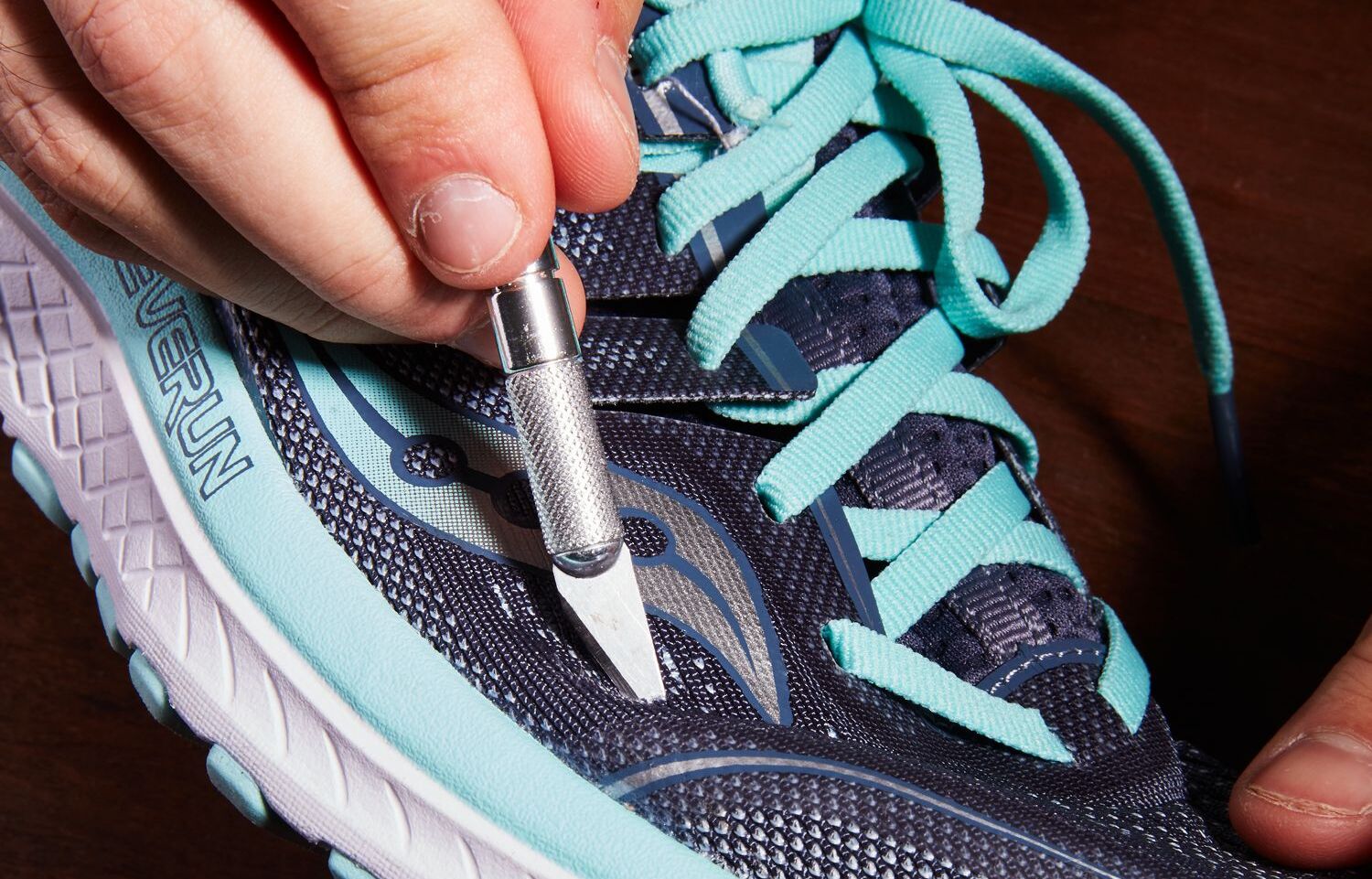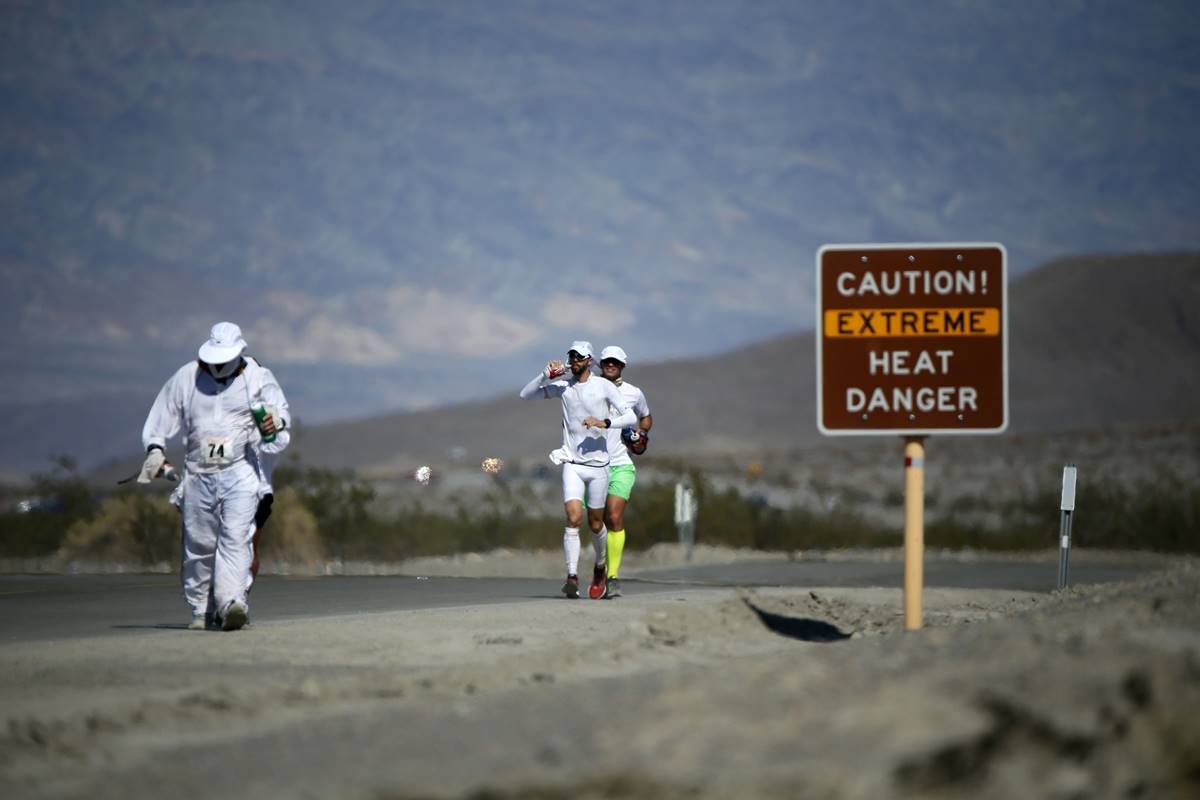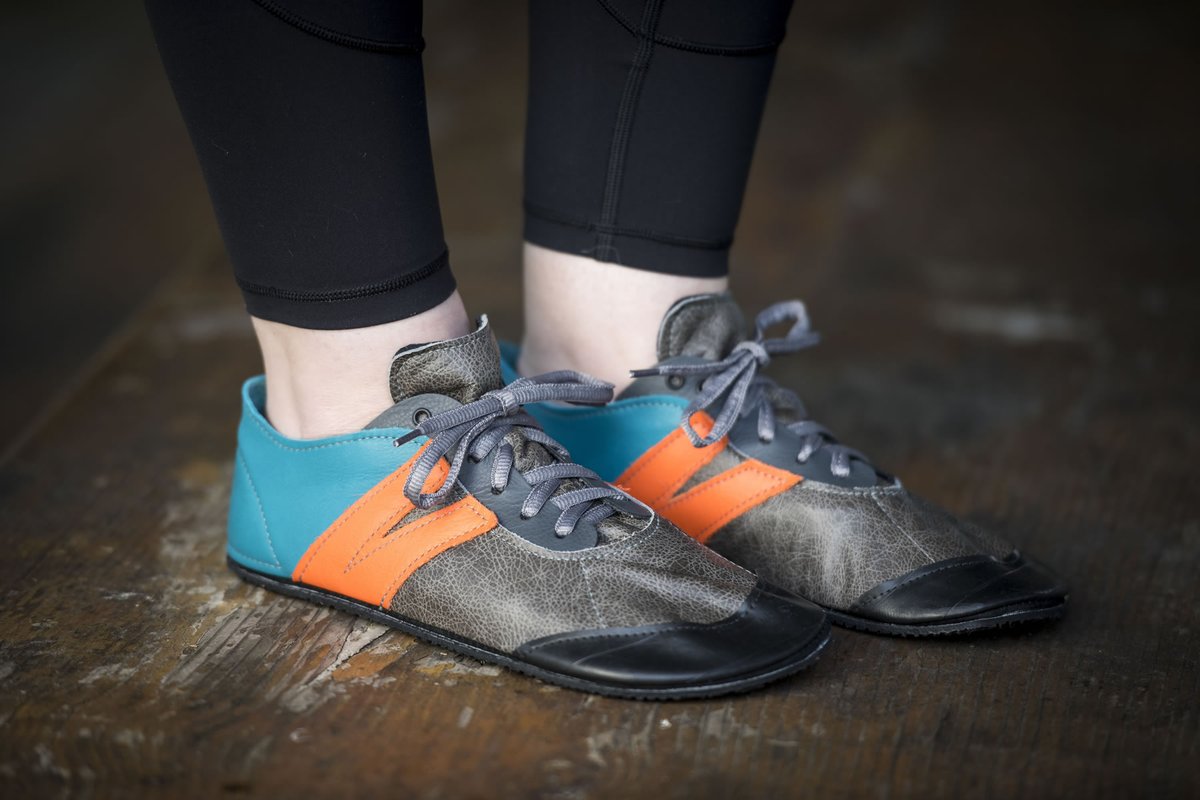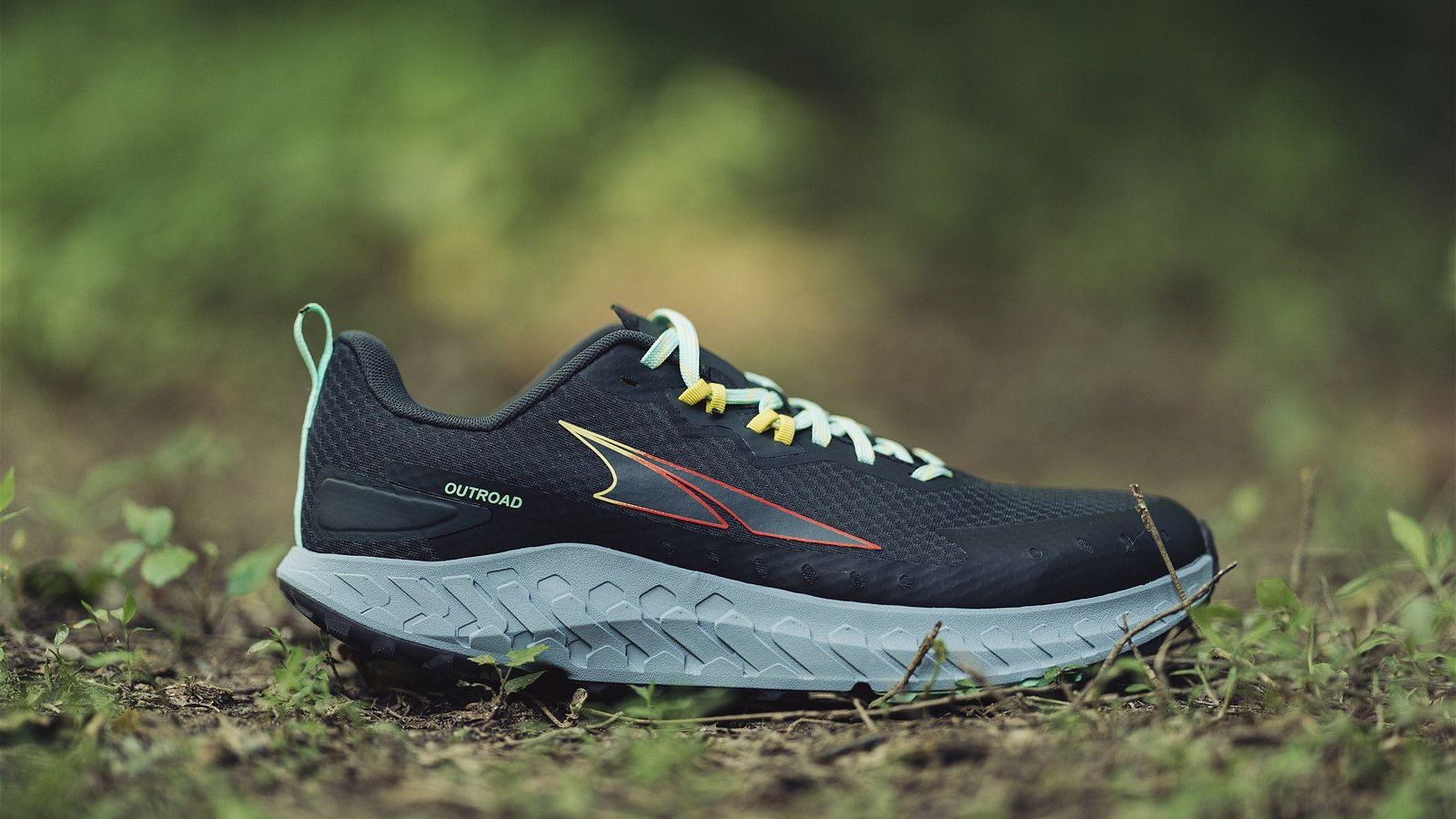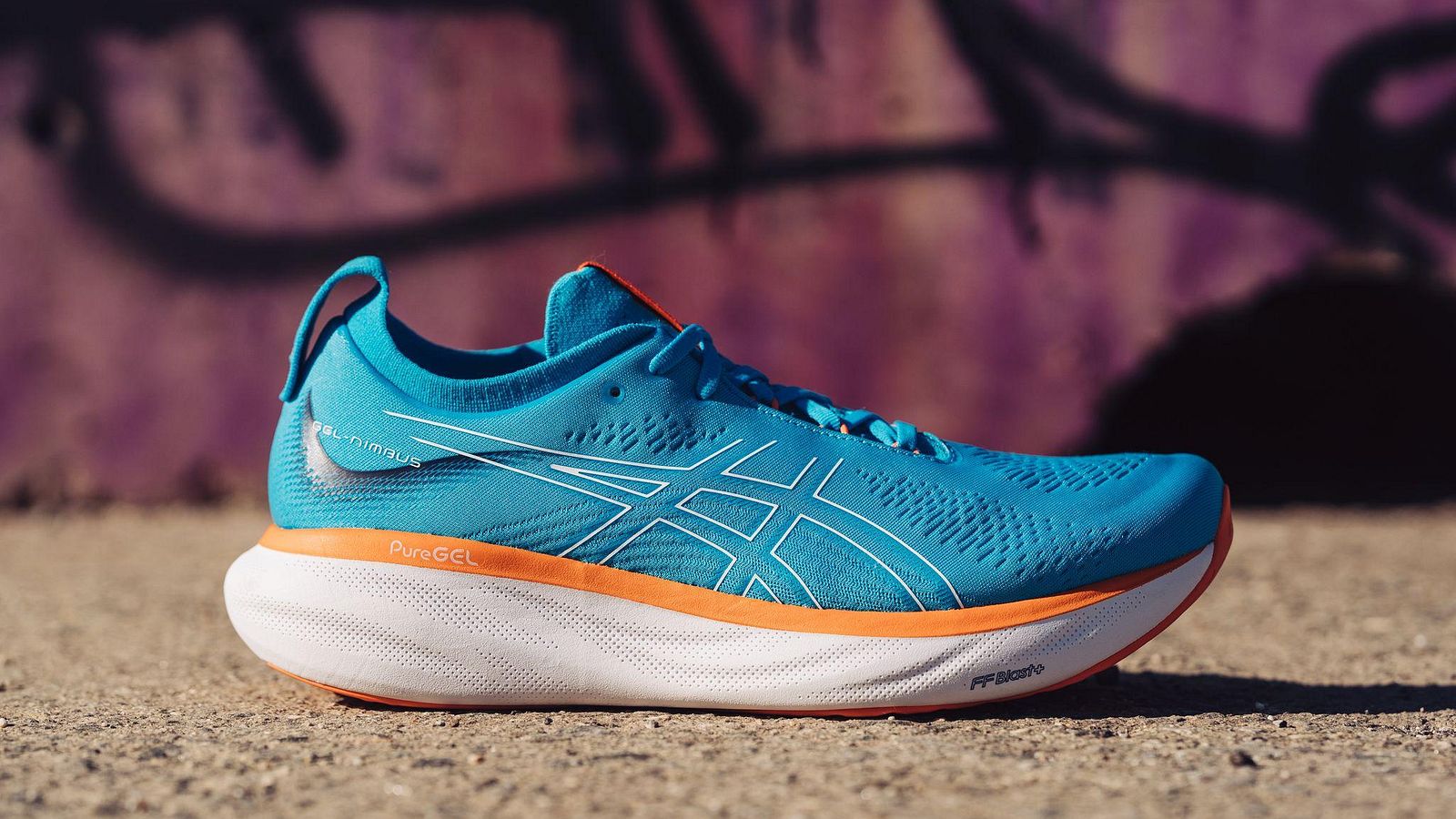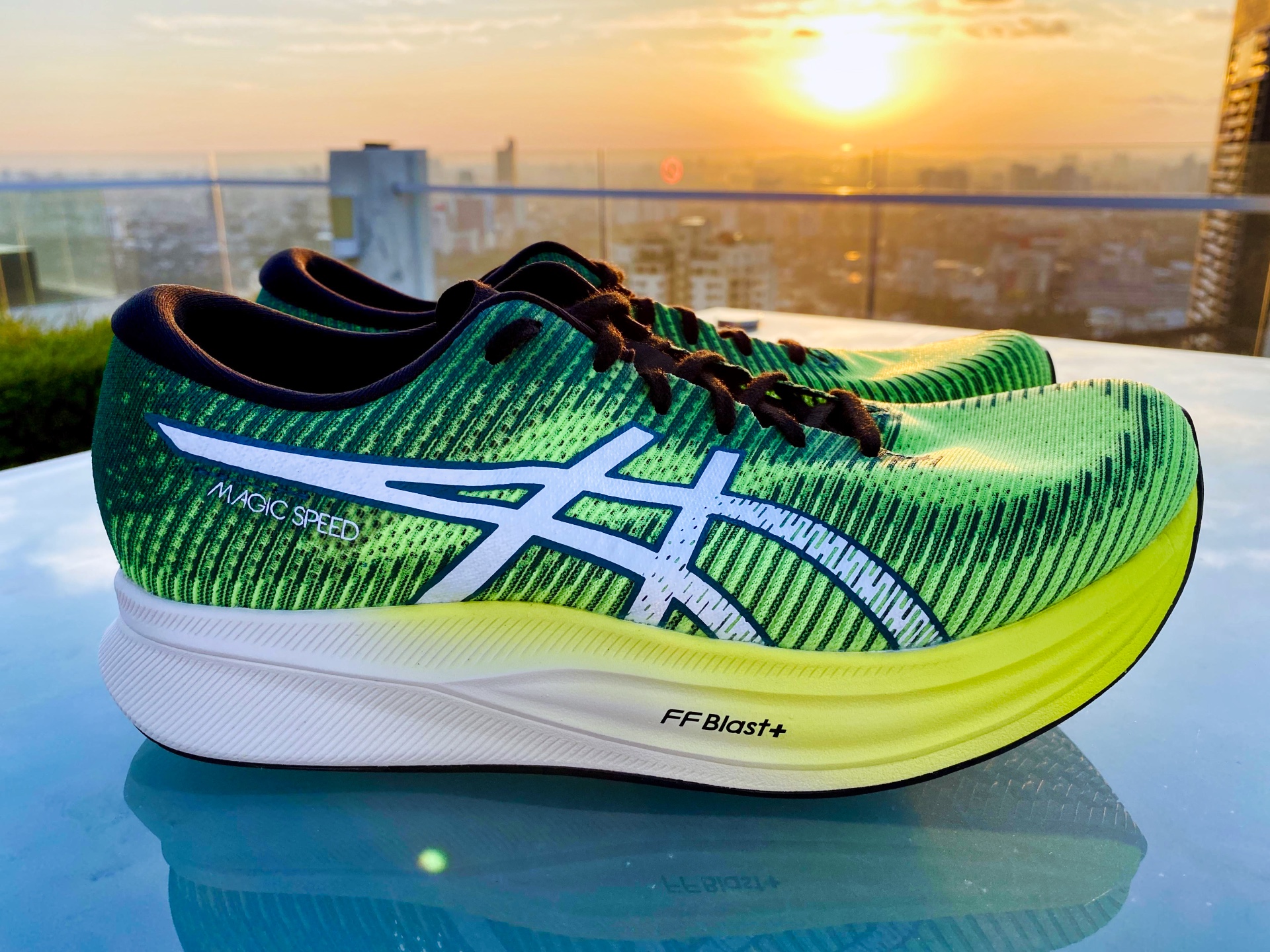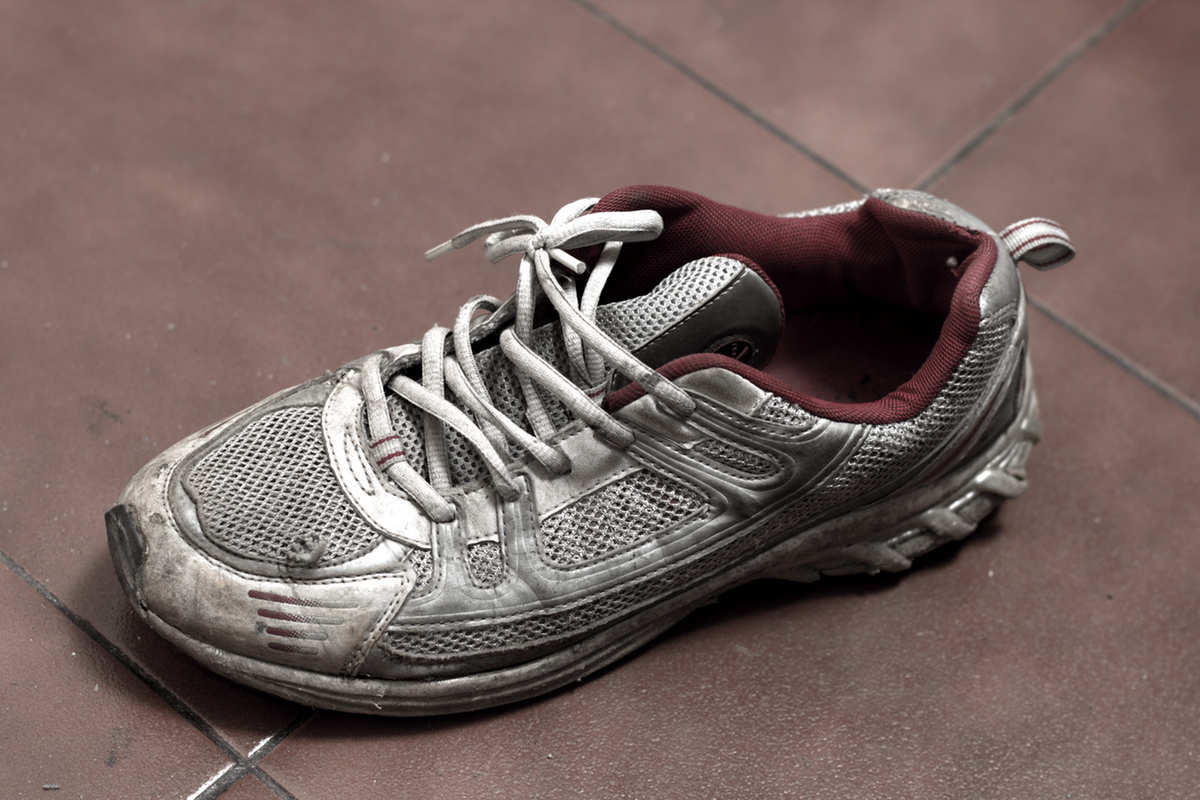Home>Misc>Featured>How To Tell When Running Shoes Are Worn Out
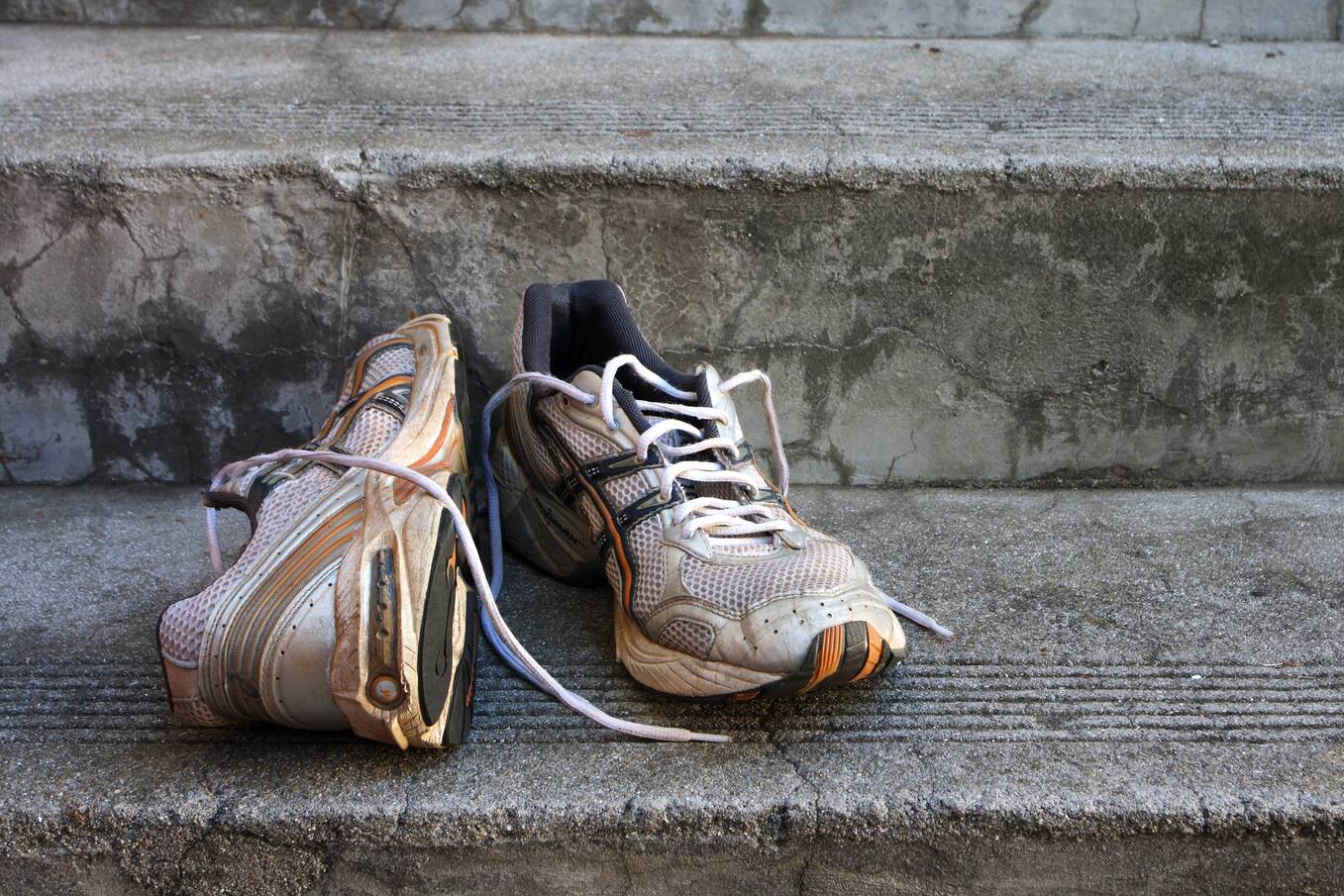

Featured
How To Tell When Running Shoes Are Worn Out
Modified: January 2, 2024
Discover the signs that indicate your running shoes are worn out and need to be replaced. Learn when to look for replacements with our featured guide.
Introduction
Running shoes are essential gear for any runner, providing cushioning, support, and protection during physical activity. Over time, however, these shoes will naturally wear out, compromising their effectiveness and potentially causing discomfort or injury. As a runner, it’s crucial to know when your running shoes are worn out and need to be replaced.
Knowing when it’s time to retire your running shoes can be challenging, especially if you’re unsure what signs to look for. In this article, we will explore the various indicators that will help you determine when it’s time to replace your worn-out running shoes. By familiarizing yourself with these signs, you can avoid potential injuries and ensure you always have a reliable and comfortable pair of shoes for your runs.
It’s important to note that the lifespan of a running shoe can vary depending on several factors, including your body weight, running style, terrain, and frequency of use. Nevertheless, there are common signs of wear and tear that apply to most running shoes, regardless of these factors.
By observing the wear and tear on different parts of your running shoes, you will be able to make an informed decision about when to replace them. In the following sections, we will discuss the key areas to look out for when assessing the condition of your running shoes.
Signs of wear on the outer sole
The outer sole of your running shoes is the part that comes into direct contact with the ground, absorbing the impact and providing traction. Over time, the wear on the outer sole can significantly affect your shoe’s performance and safety.
One of the key indicators of wear on the outer sole is the erosion of the tread pattern. The tread pattern includes the lugs or grooves that provide grip and traction. As you accumulate miles on your running shoes, the tread will gradually wear down, resulting in a smoother and flatter surface. If you notice that the tread is significantly worn down, and the lugs or grooves are nearly gone, it’s a clear sign that your running shoes have reached the end of their lifespan.
Another important aspect to examine is the distribution of wear on the outer sole. Ideally, the wear should be even across the entire sole. However, if you notice that certain areas are more worn out than others, it may indicate an issue with your running gait or foot strike. For example, excessive wear on one side of the sole could be a sign of overpronation or underpronation, which may require additional support or corrective footwear. It’s essential to address these issues to prevent discomfort or potential injuries.
In addition, inspect the outer sole for any cracks or separation. Continuous impact and stress on the sole can lead to the development of cracks, especially in older or worn-out shoes. Cracks not only compromise the shoe’s stability and cushioning but also increase the risk of water seeping into the shoe, causing discomfort and potential damage.
Regularly examining the outer sole of your running shoes will allow you to determine the extent of wear and assess whether it’s time for a replacement. Remember, a worn-out outer sole can significantly impact your grip and stability, increasing the risk of slips, falls, and injuries during your runs.
Indications of wear on the midsole
The midsole is a crucial component of your running shoes as it provides cushioning and absorbs shock during each stride. Over time, the midsole will naturally compress and lose its original shape, leading to a decrease in support and comfort. It’s important to be aware of the signs that indicate wear on the midsole to ensure optimal performance and prevent injuries.
One of the key indicators of midsole wear is the loss of cushioning. When you first purchase a pair of running shoes, the midsole will feel plush and provide excellent shock absorption. However, as you accumulate miles, the midsole will gradually lose its ability to cushion impacts effectively. If you notice that your shoes no longer provide the same level of cushioning they once did, it could be a sign that the midsole has worn out and needs to be replaced.
Another indication of midsole wear is the appearance of creases or wrinkles. Over time, the repeated bending and flexing of the midsole will cause it to develop visible creases. These creases may be more prominent in specific areas, depending on your running gait and foot strike. If you notice excessive creasing or wrinkling, it’s a sign that the midsole has become less responsive and supportive, indicating it’s time for new running shoes.
In some cases, you may also observe visible compression or flattening of the midsole. This can happen gradually over time as the cushioning material loses its resilience. If you notice that the midsole no longer maintains its original shape and appears flat or compressed, it’s a clear indication that the shoes have worn out and will no longer provide the necessary support and shock absorption.
Keep in mind that the rate at which the midsole wears out can vary depending on factors such as body weight, running style, and the type of cushioning material used in the shoe. However, monitoring the condition of the midsole regularly will help you determine when it’s time to retire your worn-out running shoes and invest in a new pair that will provide adequate support and cushioning for your runs.
Insole and cushioning evaluation
The insole and cushioning of your running shoes play a crucial role in providing comfort and support to your feet. Over time, however, the cushioning can break down and lose its effectiveness. By evaluating the insole and cushioning, you can determine whether your running shoes are still providing the necessary comfort and protection.
One of the indicators of wear in the insole is a loss of cushioning and support. If you feel that the insole no longer provides the same level of comfort or if you can feel the hard surface of the shoe underneath, it may be a sign that the insole has worn out. Additionally, if the insole is visibly compressed or feels flat, it’s a clear indication that it’s no longer providing the necessary cushioning and support.
Another aspect to consider is the presence of any lumps or bumps in the insole. Over time, the cushioning material can shift or deteriorate, resulting in uneven distribution and the formation of lumps. These lumps can cause discomfort and potentially lead to foot pain or injuries. It’s important to thoroughly check the insole for any abnormalities or irregularities that may affect your overall comfort during runs.
Additionally, pay attention to any signs of excessive wear or deterioration in the cushioning throughout the shoe. This can be particularly noticeable in high-impact areas such as the heel or forefoot. If you observe any signs of thinning or visible damage to the cushioning material, it’s an indication that the shoes have reached the end of their lifespan and should be replaced.
It’s worth mentioning that the insole can be replaced separately from the entire shoe. If you feel that the rest of your running shoes are still in good condition, replacing the insole can help restore some of the comfort and support. However, if other components, such as the midsole or outer sole, are also significantly worn out, it may be more practical to invest in a new pair of running shoes altogether.
Regularly evaluating the condition of the insole and cushioning will allow you to assess whether your running shoes are still providing the necessary comfort and support. Remember, proper cushioning is essential to absorb shock and prevent potential discomfort or injuries during your runs.
Assessing the upper part of the shoe
The upper part of your running shoes is responsible for providing a secure and comfortable fit. Over time, however, the upper can show signs of wear and tear, compromising its ability to support your feet properly. By assessing the condition of the upper, you can determine whether your shoes are still suitable for running.
One of the key indicators of wear in the upper is the presence of visible tears, holes, or fraying. Inspect the upper thoroughly, paying close attention to areas that experience the most stress, such as the toe box and sides. If you notice any signs of damage, it’s a clear indication that the structural integrity of the shoe has been compromised. Not only can this affect the fit and support, but it can also increase the risk of further damage or injury.
In addition to visible damage, evaluate the overall fit and feel of the upper. Over time, the materials in the upper can stretch or become less supportive. If you notice that your shoes no longer provide a snug and secure fit, it may be an indication that the upper has stretched and is no longer holding your foot properly. This can lead to instability, blisters, and discomfort during your runs.
Another aspect to consider is the breathability of the upper. Running shoes with mesh or breathable materials allow air to circulate, helping regulate temperature and reduce moisture buildup. If you notice that the upper has become less breathable or if there are signs of excessive wear in the areas where breathability is essential, it may be a sign that the shoes have reached the end of their lifespan.
It’s important to note that while the upper may show signs of wear and tear, the overall condition of the shoe, including the midsole and outer sole, should also be taken into consideration. If the upper is worn out, but the rest of the shoe is still in good condition, it may be possible to replace the upper or have it repaired. However, if multiple components of the shoe are significantly worn out, it may be more practical to invest in a new pair of running shoes.
Regularly assessing the condition of the upper part of your running shoes will allow you to determine whether they are still providing the necessary support, fit, and comfort. Remember, a well-maintained upper is essential for a secure and enjoyable running experience.
Checking for signs of instability
When assessing the condition of your running shoes, it’s important to consider their stability. Instability in running shoes can affect your balance, gait, and overall performance, increasing the risk of injuries. By checking for signs of instability, you can determine whether it’s time to replace your shoes and find a more stable pair.
One of the key indicators of instability is excessive shoe rocking or wobbling when placed on a flat surface. This can be observed by gently pressing down on the front and back of the shoe. If you notice significant movement or uneven rocking, it suggests that the shoe’s structural integrity has been compromised, making it less stable during runs. This can be particularly dangerous on uneven terrain or during quick changes in direction.
Another sign of instability is a decline in arch support. Over time, the arch support in running shoes can wear out or lose its shape, affecting your foot’s natural alignment. If you feel that your arches are no longer adequately supported or if you notice that your feet are rolling excessively inward or outward while running, it’s an indication that the shoes are no longer providing the stability you need.
In addition, assess the overall feel of the shoe while wearing it. If you experience excessive side-to-side movement or if you feel that your feet are sliding inside the shoe, it’s a sign of instability. A shoe that doesn’t provide a secure and stable fit can affect your running form and increase the risk of tripping or falling.
It’s important to remember that stability needs may vary from runner to runner based on factors such as foot shape, running gait, and personal preference. What works for one person may not work for another. Therefore, it’s essential to find a shoe that offers the right level of stability for your individual needs and running style.
If you’re unsure about the stability of your current running shoes, consider consulting with a professional, such as a podiatrist or running shoe specialist. They can assess your gait, foot type, and running mechanics to give you personalized recommendations for more stable footwear.
Regularly checking for signs of instability in your running shoes will help you maintain a stable and safer running experience. Remember, stability plays a crucial role in preventing injuries and optimizing your performance on the road or trail.
Common mistakes in determining shoe wear
Determining when to replace your running shoes can be a subjective process, and there are common mistakes that runners often make when assessing the wear of their shoes. By being aware of these mistakes, you can avoid making inaccurate judgments and ensure that you replace your shoes at the appropriate time.
One common mistake is relying solely on the shoe’s outward appearance. While visible signs of wear such as worn-down treads or visible tears can indicate a need for replacement, relying solely on these external factors can be misleading. The true condition of the shoe’s midsole and cushioning, which play a vital role in providing support, can’t be accurately determined by external appearances alone.
Another mistake is following a rigid timeline for shoe replacement. While it’s recommended to replace running shoes every 300-500 miles, this guideline should be viewed as a general estimate. Factors such as body weight, running style, and terrain can impact the rate at which shoes wear out. Instead of relying solely on mileage, it’s essential to pay attention to the actual wear and tear of the shoe, as well as any signs of discomfort or reduced performance.
Not considering personal running habits and preferences is another common mistake. Each runner is unique, and what may work for one person may not work for another. Factors such as foot strike, pronation, and individual comfort requirements should be taken into account when assessing shoe wear. It’s important to listen to your body and trust your own experiences when determining if your shoes need to be replaced.
Using old shoes for purposes other than running is also a mistake to avoid. While your running shoes may seem perfectly fine for casual activities or everyday wear, it’s important to remember that running shoes are designed specifically for running and may not provide the necessary support and protection for other activities. Repurposing old running shoes for activities outside of running can accelerate their wear and increase the risk of injury.
Lastly, neglecting to regularly assess the condition of your running shoes is a common mistake. Running shoes gradually deteriorate over time, even when not actively used. It’s important to regularly inspect your shoes for signs of wear, even if you haven’t reached the recommended mileage threshold for replacement. This can help you catch any issues early on and prevent discomfort or potential injuries.
By being aware of these common mistakes, you can make more accurate assessments of your running shoe wear and ensure that you replace them at the right time. Remember, your comfort, support, and safety during your runs should always be a priority.
Conclusion
Knowing when your running shoes are worn out is essential for maintaining comfort, performance, and preventing potential injuries. By paying attention to key indicators of shoe wear, such as the outer sole, midsole, insole, upper, and stability, you can make informed decisions about when it’s time to replace your running shoes.
Inspecting the outer sole for tread wear, checking the midsole for diminishing cushioning and support, evaluating the condition of the insole, assessing the upper for signs of damage or deterioration, and ensuring stability are all crucial steps in determining shoe wear. It’s important to remember that while general guidelines and milestones can be helpful, individual factors and personal preferences should also be taken into account.
Avoid common mistakes such as relying solely on outward appearance, following a rigid timeline, neglecting personal running habits, repurposing old shoes, or neglecting regular assessments. By avoiding these pitfalls, you can make more accurate judgments about when it’s time to replace your running shoes and ensure you always have the optimal gear for your runs.
Remember, regular shoe replacement is an investment in your overall running experience. Worn-out shoes can compromise comfort, support, and even increase the risk of injuries. By staying vigilant and proactive in assessing shoe wear, you can prioritize your safety and enjoyment on the road or trail.

